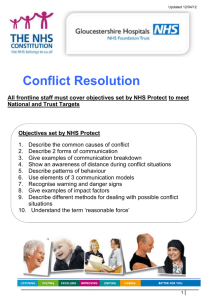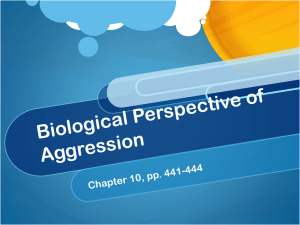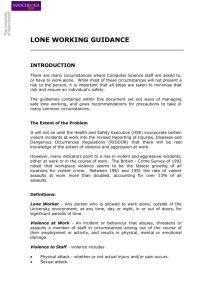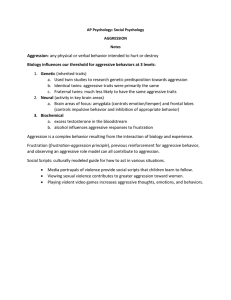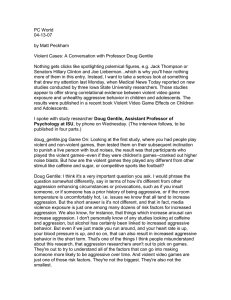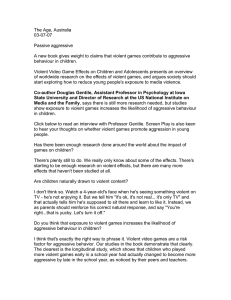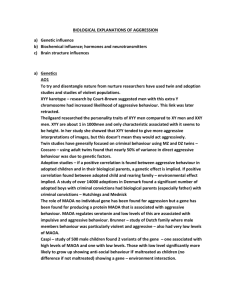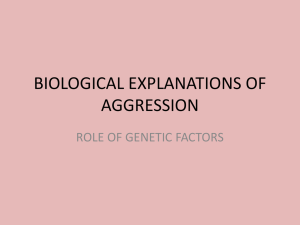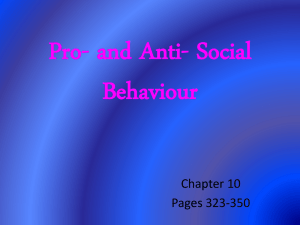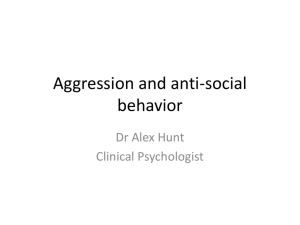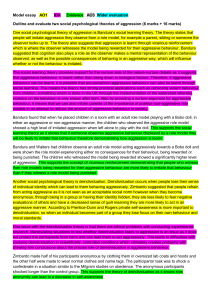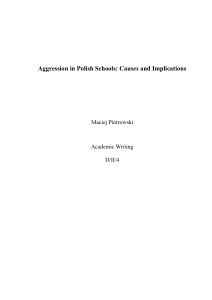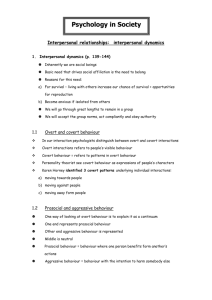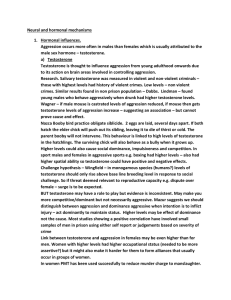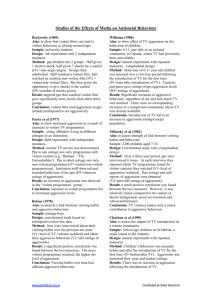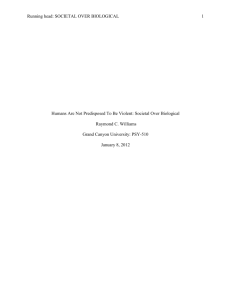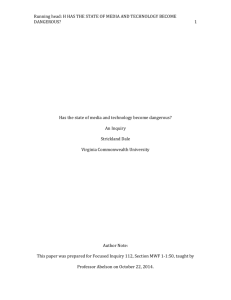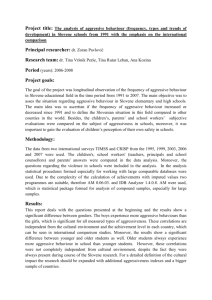ARTICLE REVIEW Περδικάκη Κατερίνα I.D. number
advertisement
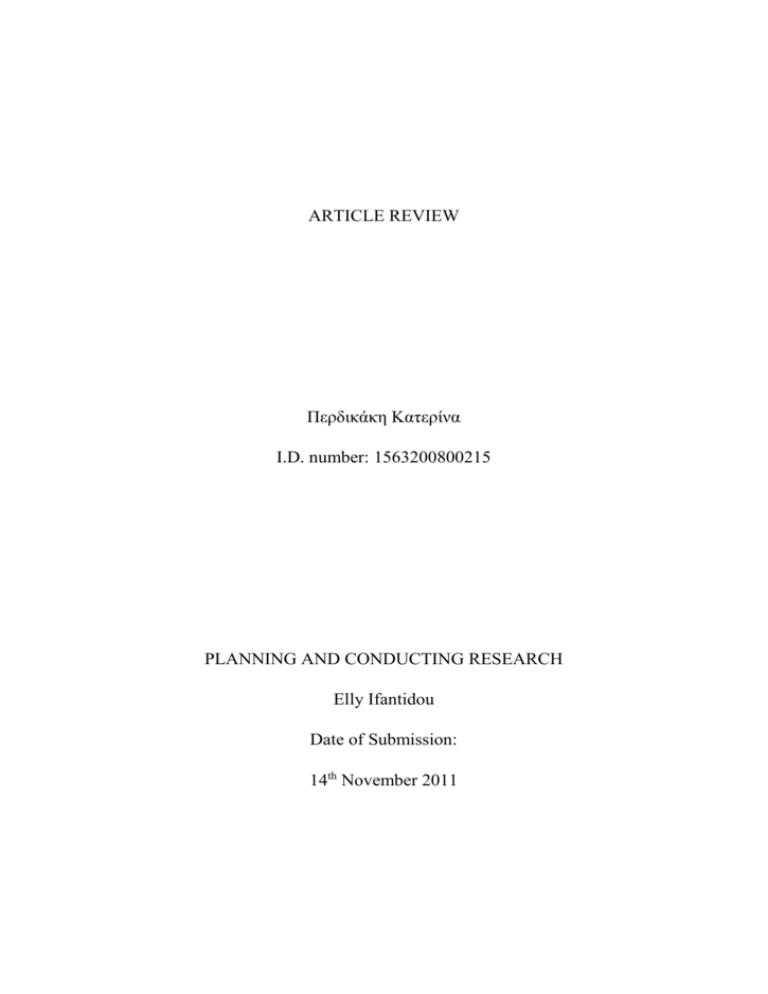
ARTICLE REVIEW Περδικάκη Κατερίνα I.D. number: 1563200800215 PLANNING AND CONDUCTING RESEARCH Elly Ifantidou Date of Submission: 14th November 2011 Schweinle, William, Ickes, William, Rollings, Kathryn and Jacquot, Colette (2010) “Maritally aggressive men: angry, egocentric, impulsive, and/or biased”. Journal of Language and Social Psychology 29 (4): 399-424. Research Topic: Violence through Language: How Innocent Are Words of Everyday Speech? The article is concerned with the relationship between the language used by maritally aggressive men, other characteristics of them (anger, impulsivity, inferential bias and attentional disorder or impairment) and their wife-directed aggression. The authors aspire to shed light on the significance lying in the language employed by such men in predicting their violent behaviour towards their wives. As far as the hypotheses are concerned, these are explicitly stated: the authors expect to indicate that men who describe their marriages by means of linguistic expressions conveying anger are quite maritally aggressive and so are thought to be highly impulsive men. They also attempt to show that attentional disorder/impairment results in increased wife-directed aggression and, finally, that the same holds true as regards the strength of the men’s critical/rejecting-overattribution bias. The study relies on findings of previous research, which actually pointed to the aforementioned characteristics as crucial indicators of maritally men’s aggression. Rather than simply confirming, the article further examines the specific issue and concludes with additional factors that play a significant part in predicting these men’s violent behaviour. In the end, it comes up with two types of maritally aggressive men, but suggests further research into the specific characteristics of each type. The cornerstone of the study involved is the assumption that language is the medium through which people express aspects of their personality and emotional life, even unintentionally. Besides, the importance of linguistic word count analyses has been supported by previous researchers (Cohn, Mehl, Pennebaker, Forgas and Tehani) to whom explicit reference is made. The article is of particular interest to my research topic, which concerns the way that violence is reflected on everyday speech; it can actually provide valuable assistance as regards its investigation through examining the language used by ordinary people who are yet to be labelled as violent, abusive or otherwise aggressive. Moreover, it generated certain ideas as regards the questionnaire of my research. For example, I could employ pictures presenting scenes of mild or more intense violence 2 and then ask participants to write down what comes to mind while looking at them. Although the article examines only men’s aggressive behaviour, it may come as a surprise that certain findings could apply to women as well, since participants of my research are expected to be mainly female. The material presented by the authors includes: findings stemming from the Linguistic Inquiry Word Count software, self-report items, responses to items on the Revised Dyadic Adjustment, the Conflict Tactics Scale, a measure of socially desirable response bias, one of four temperament facets as well as a version of the empathic accuracy paradigm. It is particularly helpful that detailed explanation of the material and tables enabling a visual and statistical representation of the findings are provided, which in turn facilitates the comprehension of the scientific procedure. Nevertheless, technical symbols such as M, SD, r, p and terminology like z-scores and standardized coefficients are not explained; thus, a reader lacking relevant knowledge understands their meaning solely by inferring from context. In addition, all the participants involved come from Texas and are married, which admittedly raises questions about whether the sample is representative enough. What is more, only married men are examined. Nonetheless, aggressive behaviour may precede marriage, meaning that analysing the behaviour of men in romantic relationships on the whole could point to additional factors predicting and leading to marital aggression. The authors explain that they focus on men because previous research has indicated that violence on their part is the most prominent issue and suggest further investigation into women’s violent behaviour. In fact, my research could potentially show that similar findings apply to women as well, as a widely-held assumption is that the “weaker” sex has become more aggressive and masculine nowadays in both personal and professional life. All, in all, this study is ground-breaking in that it suggests that first-person singular and first-person plural references are not correlated with wife-directed aggression. Instead, the use of third-personal singular pronouns interestingly enough points to Machiavellianism, meaning that employing pronouns such as “we”, “us” and “our” – which are seemingly collectivistic – can actually imply a manipulative behaviour. The article, finally, can prove useful in recognising signs of aggression – even when it comes to our own behaviour – which we ought to take care of in light of stable and more “peaceful” social relations. 3

